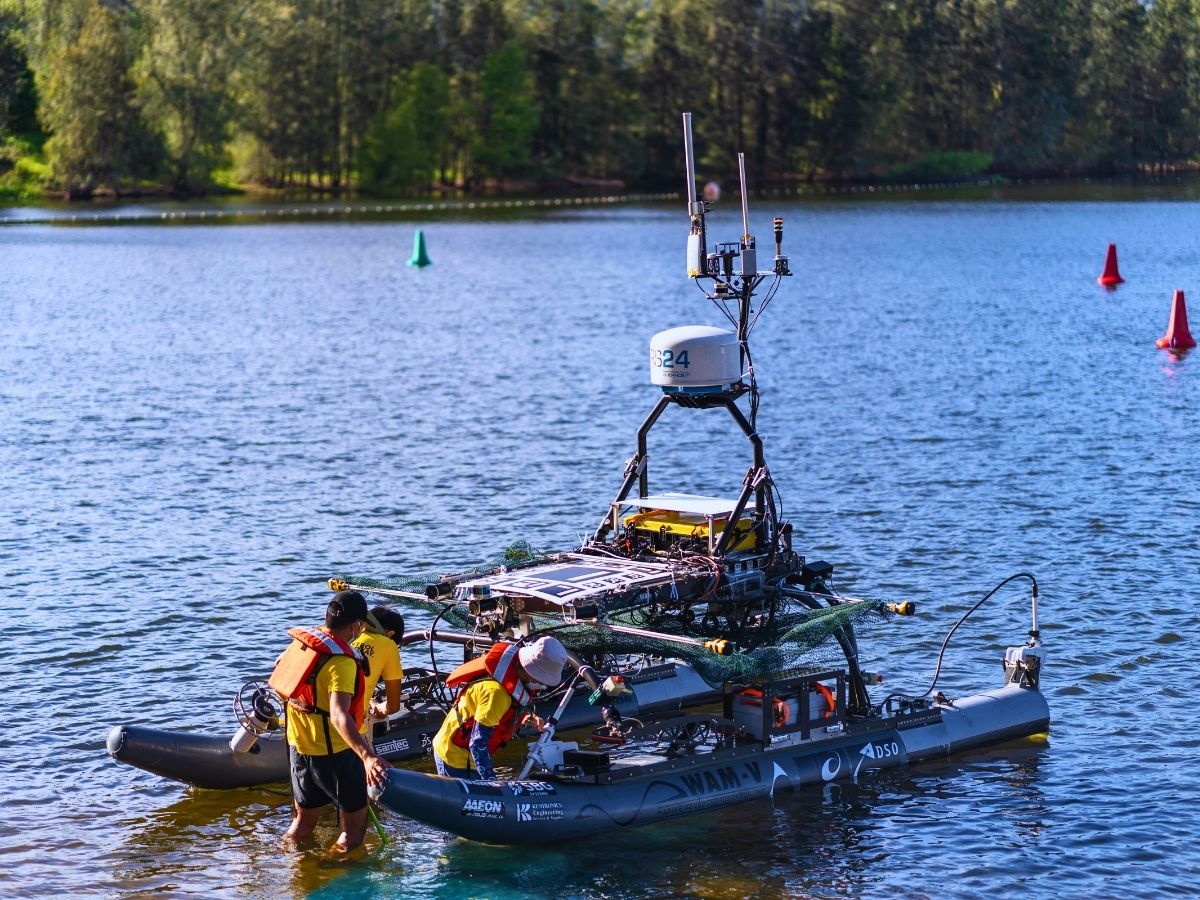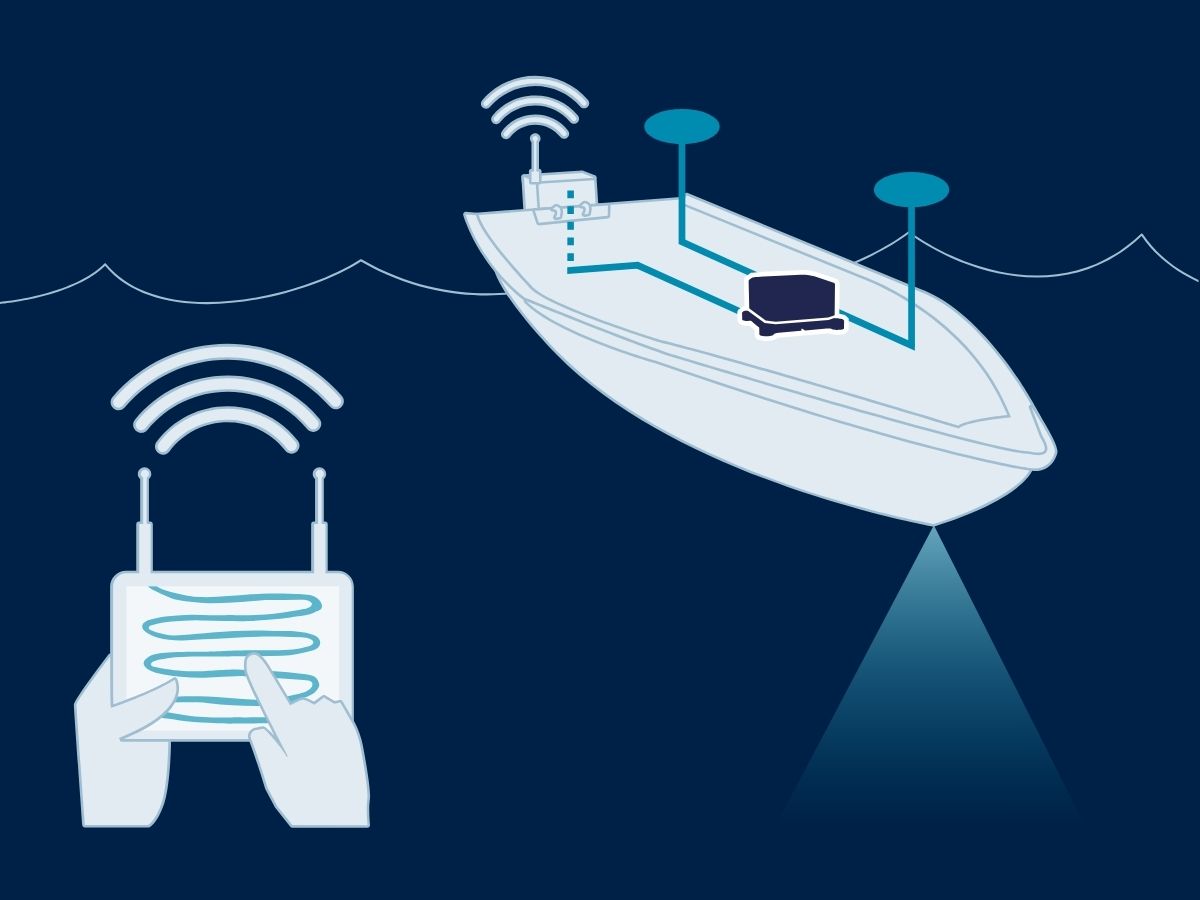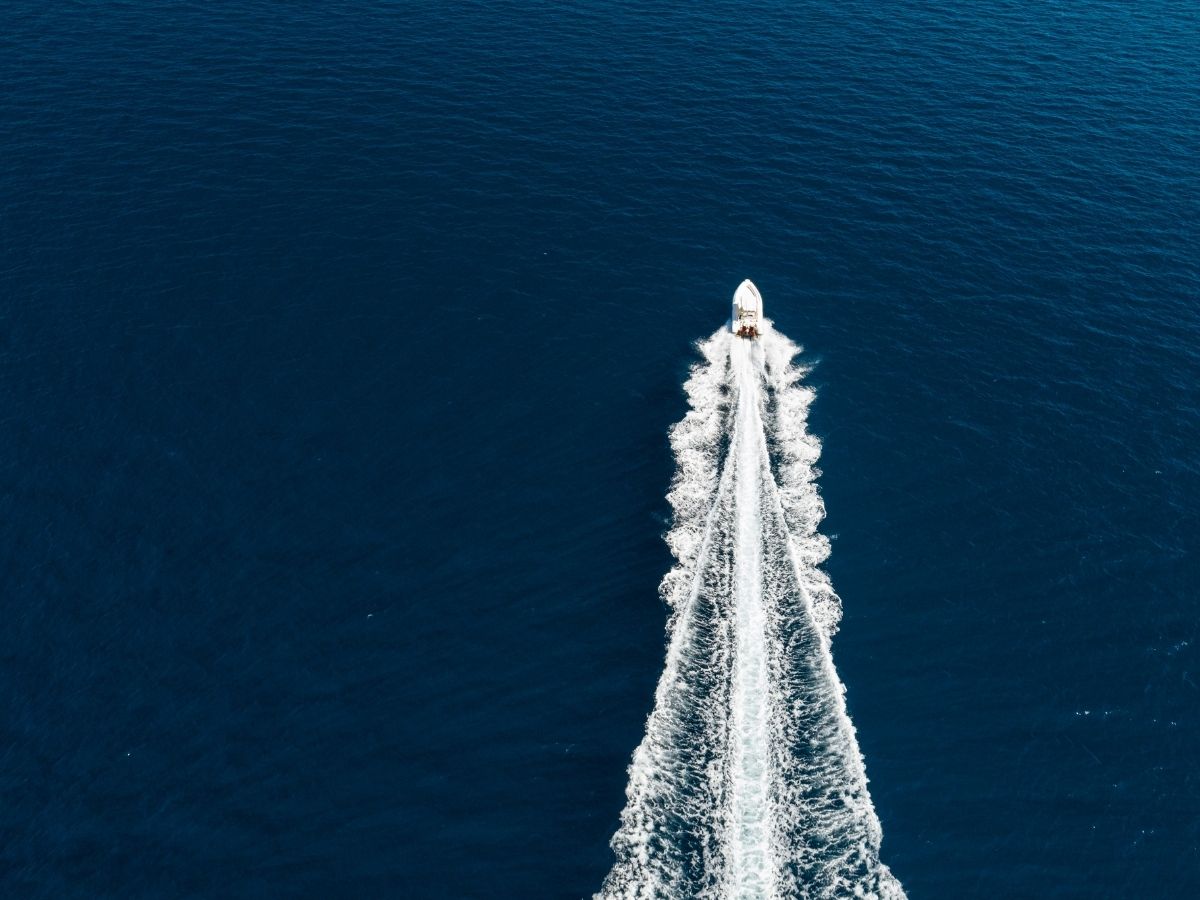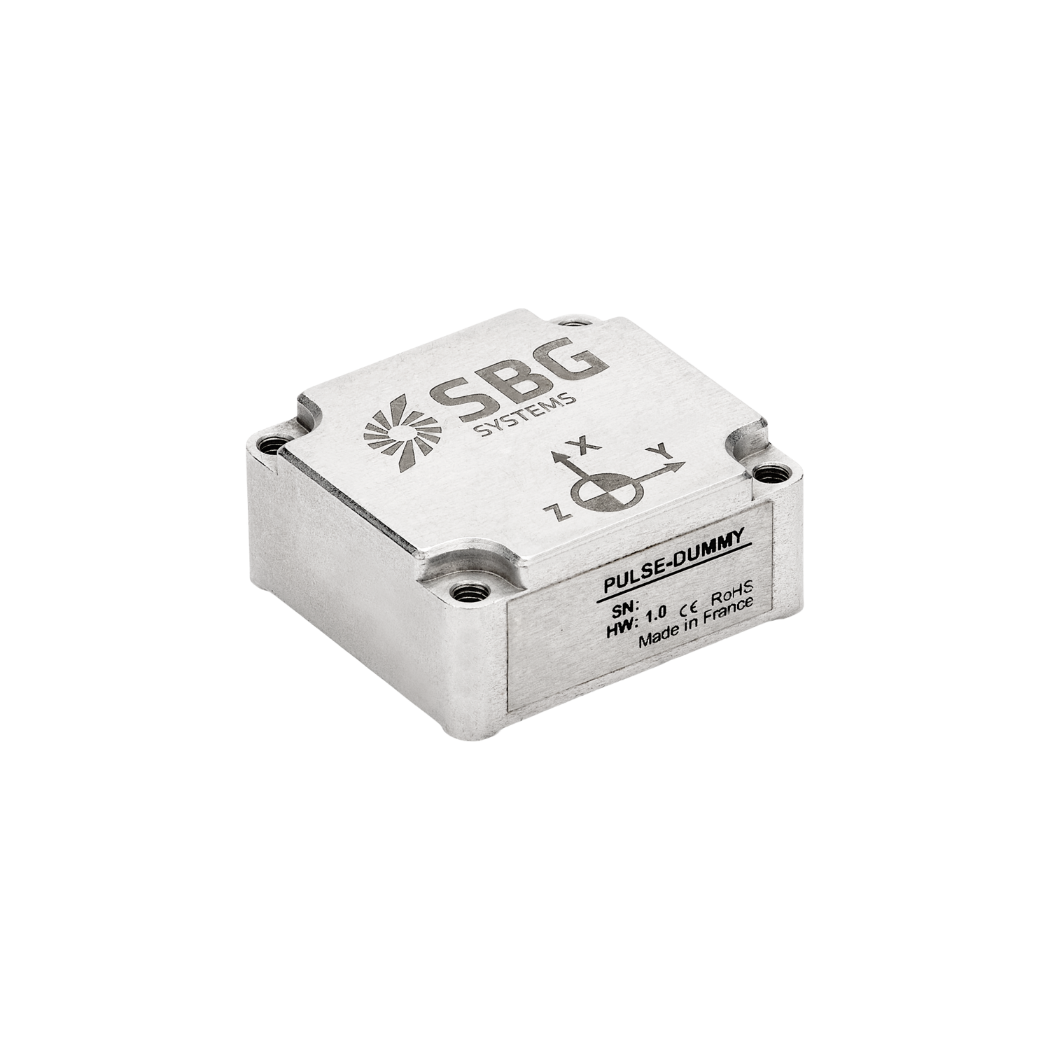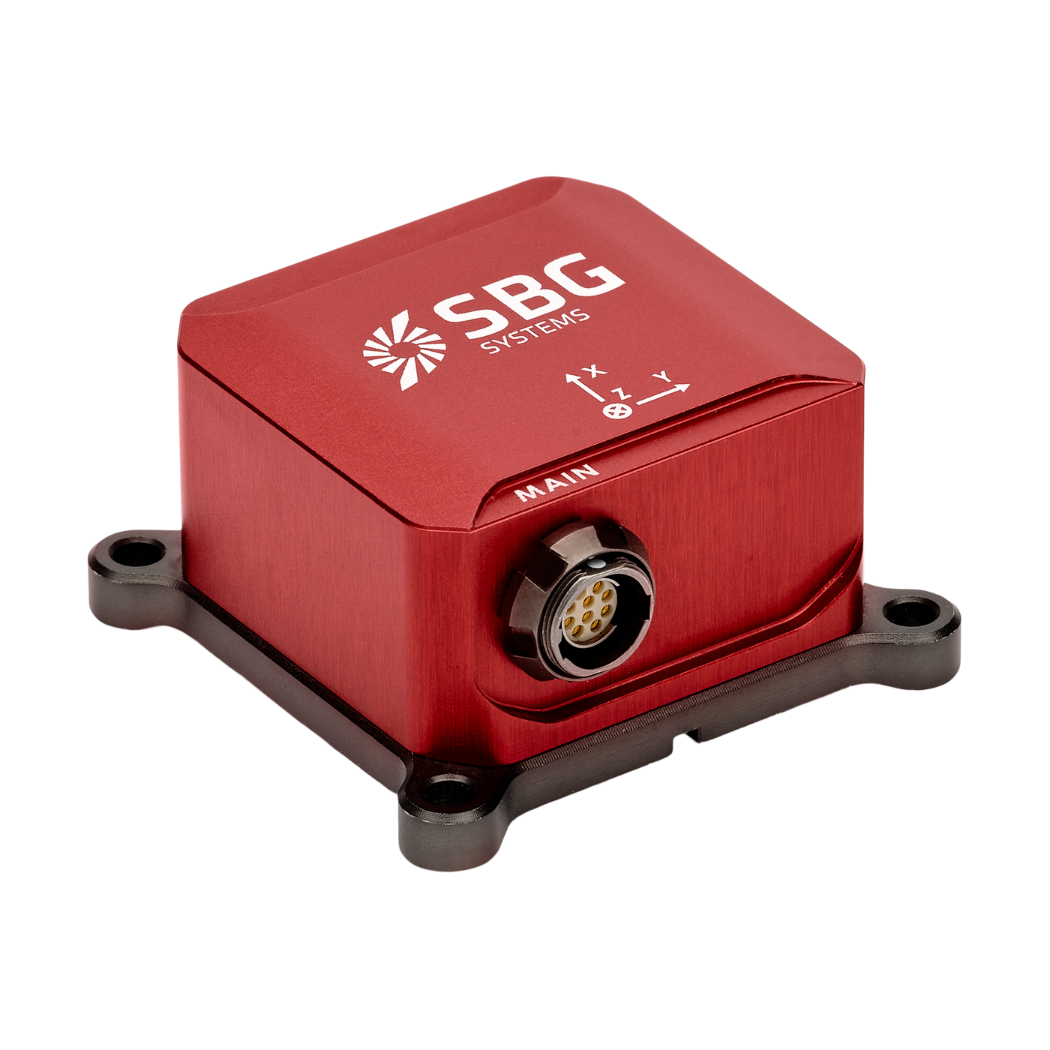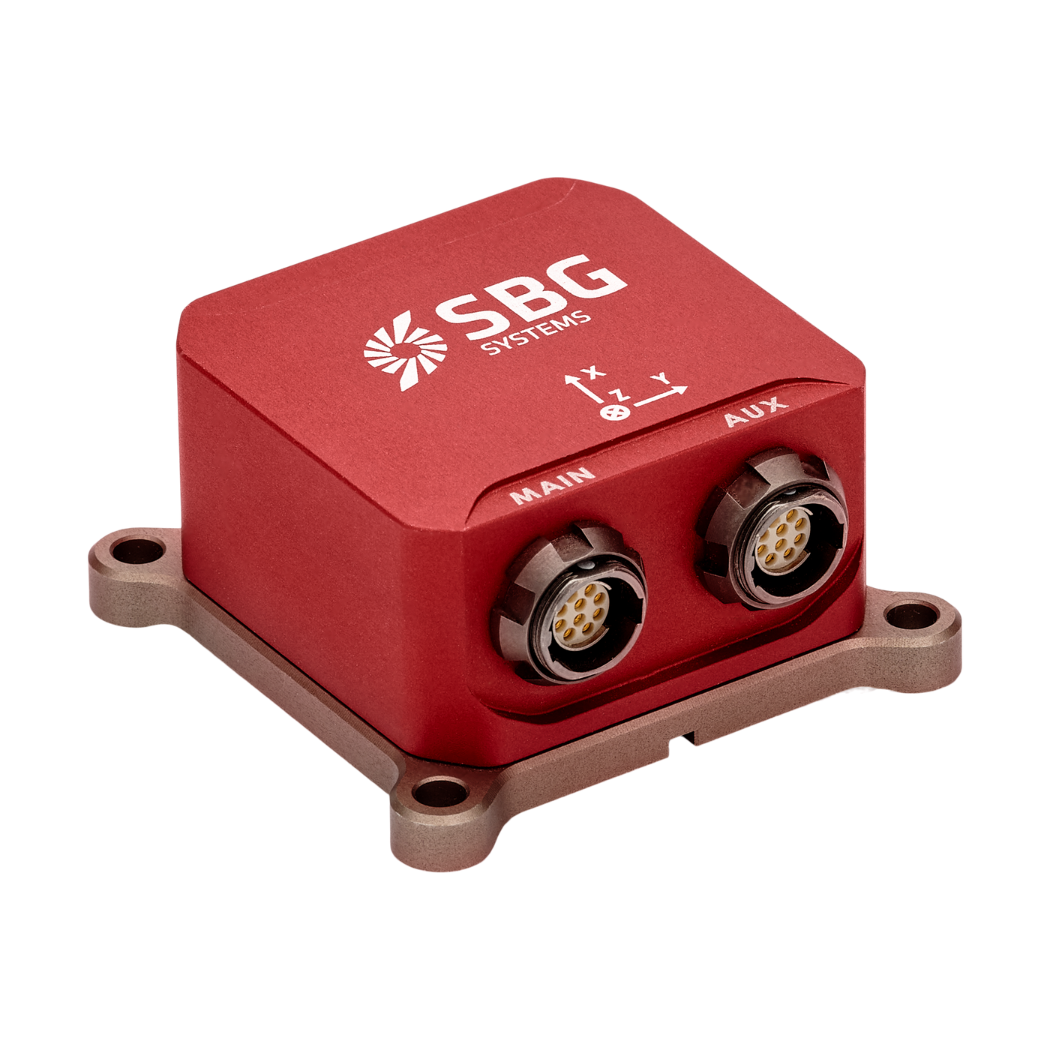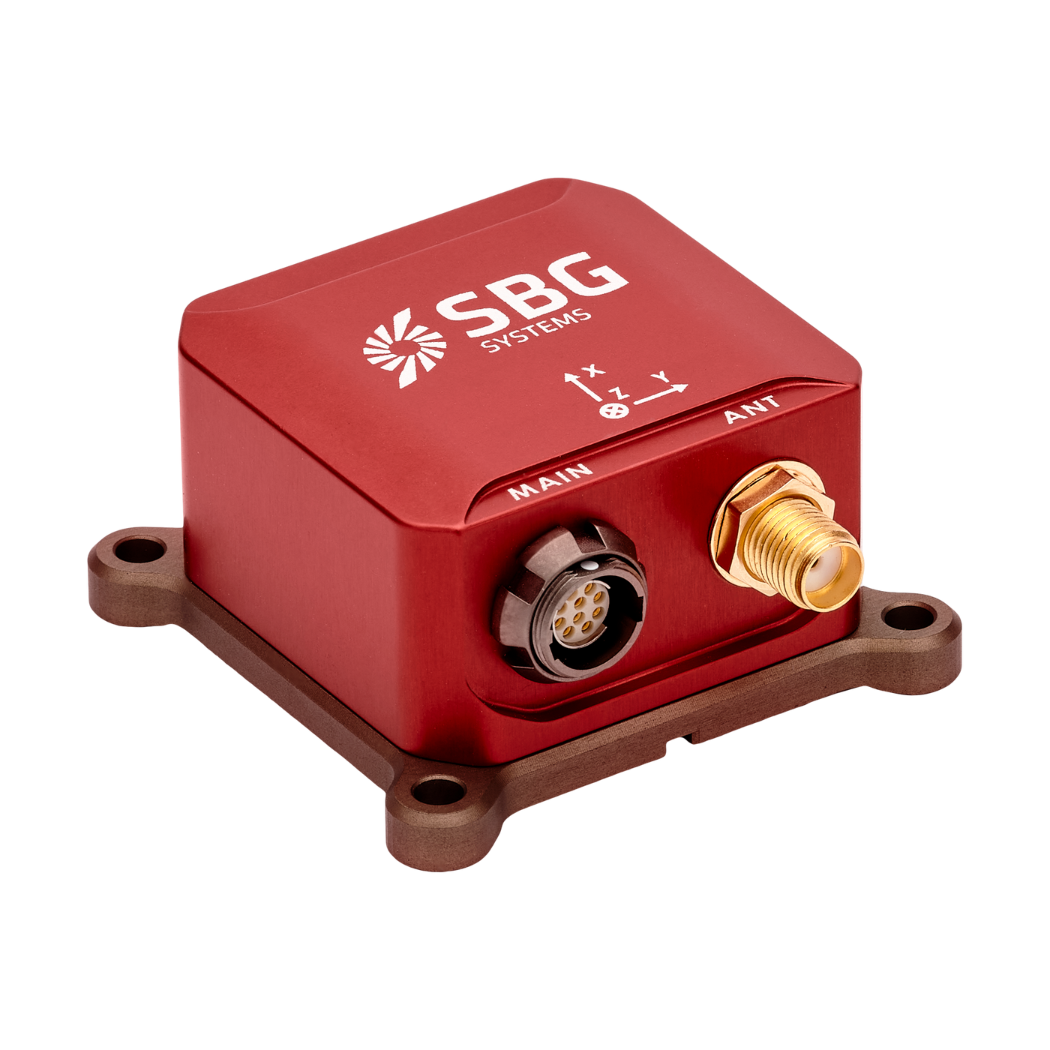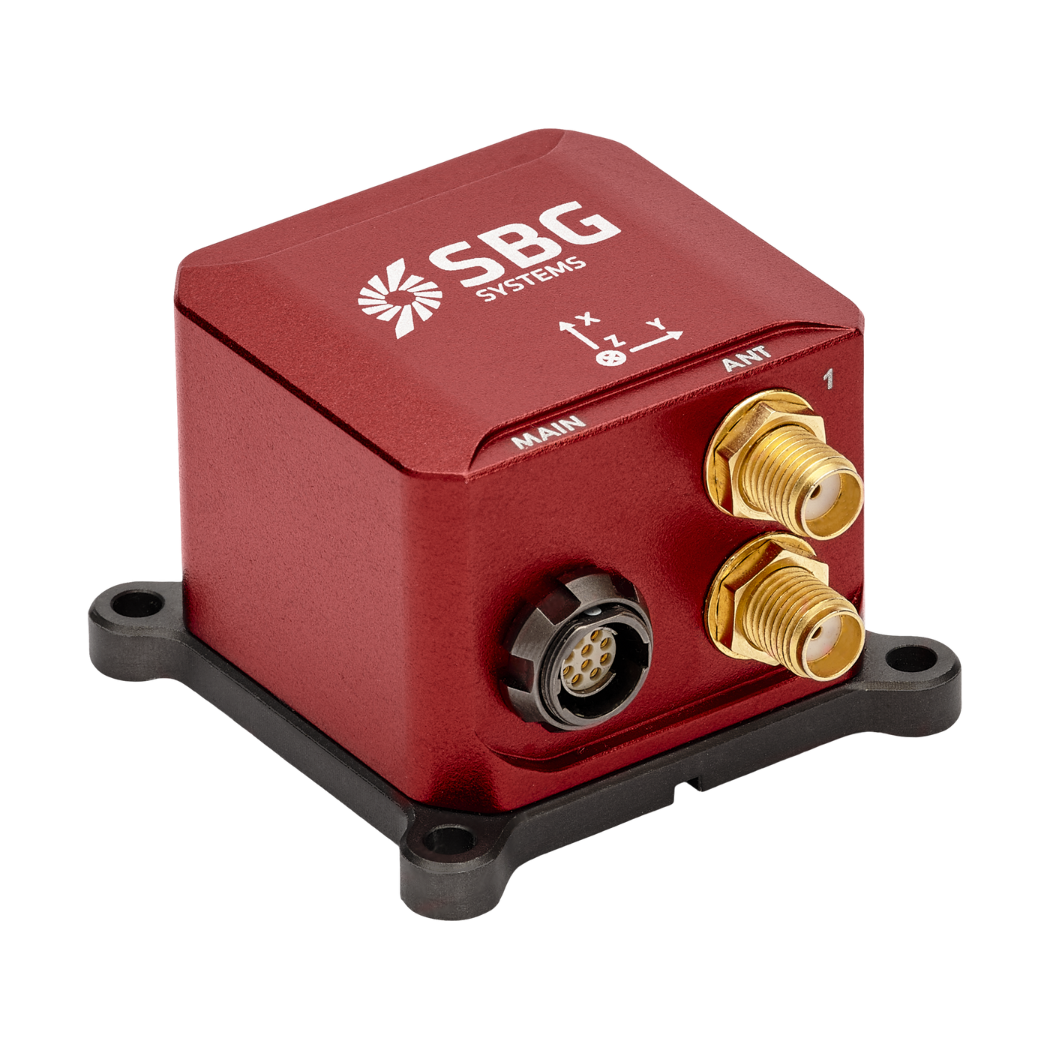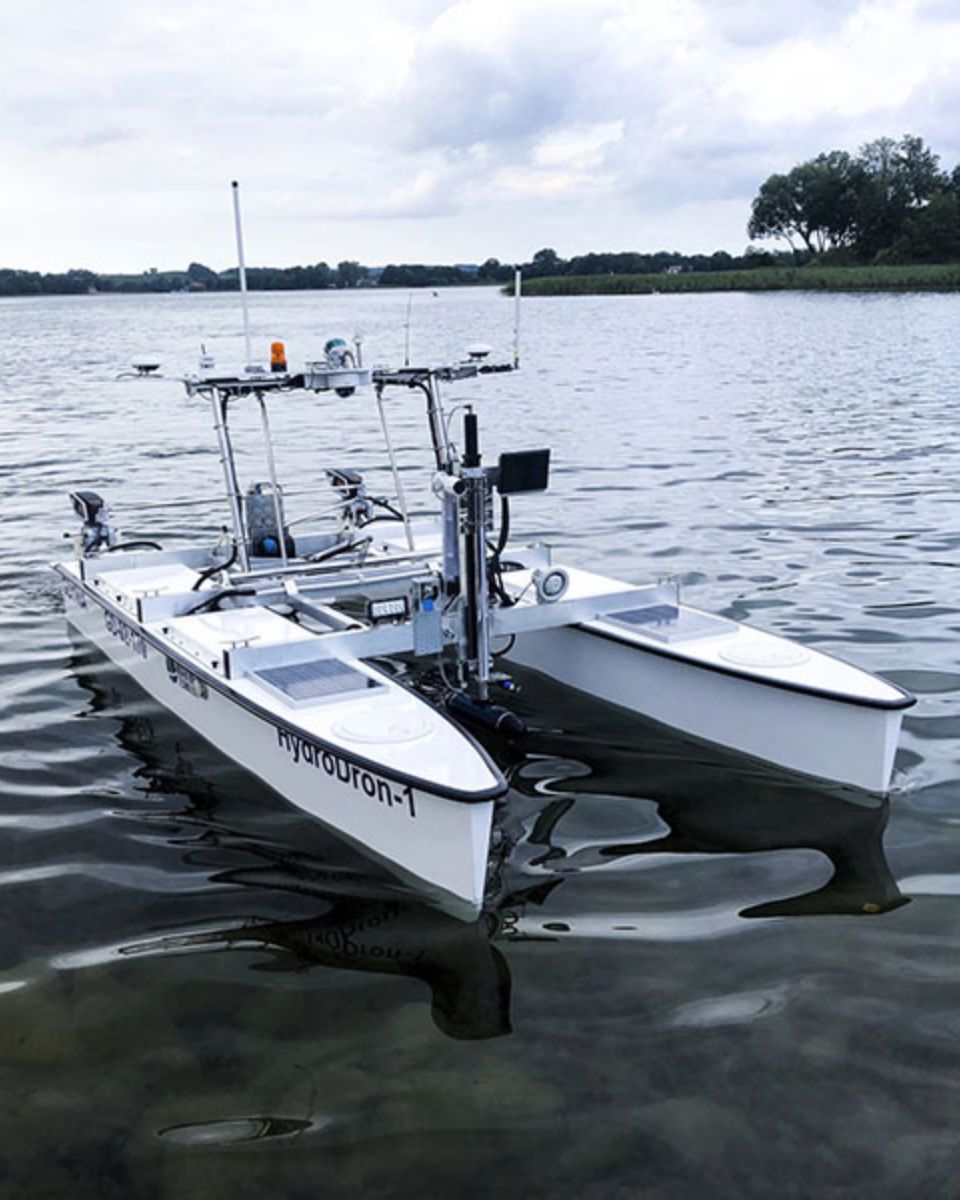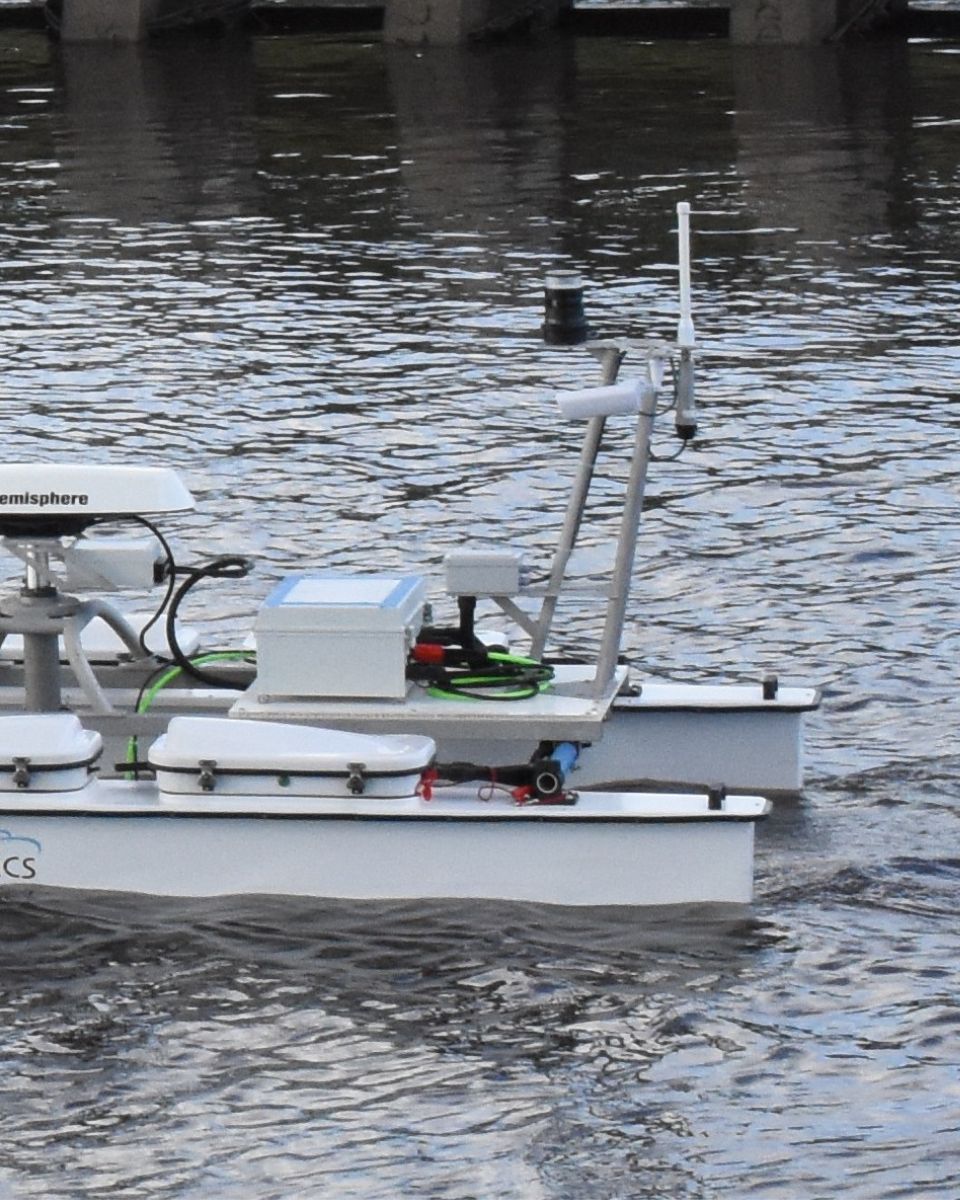Autonomous guidance and control systems
Our motion and navigation systems feed the USV’s decision-making processes, enabling it to autonomously follow predefined routes, avoid obstacles, and respond to changes in the environment.
Our USV solutions use advanced algorithms to ensure efficient and safe navigation. Based on sensor data, they adjust the vehicle’s course in real time. Our maritime inertial solutions enable remote operators to monitor and control the USV. They transmit real-time navigation data, sensor readings, and video back to a control station. Communication links allow operators to intervene in critical situations, ensuring safe and efficient navigation over long distances or during complex missions.
Real-Time Kinematic positioning for USVs
Real-time kinematic (RTK) systems provide centimeter-level positioning accuracy by correcting GNSS data with real-time information from a reference station. It is essential for USV operations that require high precision.
GNSS, including GPS, GLONASS, and Galileo, provides global positioning data to determine the USV’s exact location (latitude, longitude, and altitude). GNSS offers precise positioning and navigation in open-water environments where satellite signals are available, allowing USVs to follow predefined routes and reach designated waypoints with high accuracy. GNSS accuracy can be improved by using real-time kinematic positioning (RTK) or precise point positioning (PPP), which computes or models the errors encountered in GNSS.
Data fusion and sensor integration
Our inertial sensors often integrate data from multiple sensors (GNSS, IMU, sonar…) to improve positioning accuracy and reliability. Sensor fusion enhances overall navigation performance, allowing the USV to operate effectively in complex environments where a single navigation method may be insufficient. With our autonomous guidance, navigation and control systems, USVs minimize the risks of human error, ensuring more consistent performance during complex missions.
USVs provide cost-effective, safe, and highly versatile solutions for various maritime tasks, from defense and surveillance to environmental monitoring and data collection, while offering superior endurance and precision.
Solutions for unmanned surface vehicles
Our innovative solutions deliver exceptional precision and robustness, ensuring your vessel perform optimally in any maritime environment. From exploration to defense, our technology provides the reliability you need.
Defense applications brochure
Get our brochure delivered straight to your inbox!
Discover other unmanned systems in maritime applications
Explore how inertial navigation systems empower a wide range of unmanned maritime systems. From autonomous surface vessels (USVs) to underwater vehicles (UUVs), our solutions ensure reliable positioning, orientation, and motion data—enabling safe and efficient operations in even the most challenging marine environments.
Do you have questions?
Lorem ipsum dolor sit amet, consectetur adipiscing elit, sed do eiusmod tempor incididunt ut labore et dolore magna aliqua. Ut enim ad minim veniam, quis nostrud exercitation ullamco laboris nisi ut aliquip ex ea commodo consequat.
What is the inertial guidance system of a USV?
An inertial guidance system for an Unmanned Surface Vehicle (USV) is crucial for precise navigation and control, especially when GNSS is unavailable. Inertial sensors track motion and orientation, enabling effective navigation in challenging environments.
Inertial Navigation Systems (INS) integrate IMU data with other systems, such as GNSS or Doppler Velocity Logs, for enhanced accuracy. They also employ navigation algorithms, such as Kalman Filtering, to calculate position and velocity.
Inertial sensors support autonomous operation, providing accurate heading and position data for various applications. They ensure effective operation in GNSS-denied conditions and allow real-time adjustments for enhanced maneuverability.
What is a payload?
A payload refers to any equipment, device, or material that a vehicle (drone, vessel …) carries to perform its intended purpose beyond the basic functions. The payload is separate from the components required for the vehicle operation, such as its motors, battery, and frame.
Examples of Payloads:
- Cameras: high-resolution cameras, thermal imaging cameras…
- Sensors: LiDAR, hyperspectral sensors, chemical sensors…
- Communication equipment: radios, signal repeaters…
- Scientific instruments: weather sensors, air samplers…
- Other specialized equipment
What is the difference between IMU and INS?
The difference between an Inertial Measurement Unit (IMU) and an Inertial Navigation System (INS) lies in their functionality and complexity.
An IMU (inertial measuring unit) provides raw data on the vehicle’s linear acceleration and angular velocity, measured by accelerometers and gyroscopes. It supplies information on roll, pitch, yaw, and motion, but does not compute position or navigation data. The IMU is specifically designed to relay essential data about movement and orientation for external processing to determine position or velocity.
On the other hand, an INS (inertial navigation system) combines IMU data with advanced algorithms to calculate a vehicle’s position, velocity, and orientation over time. It incorporates navigation algorithms like Kalman filtering for sensor fusion and integration. An INS supplies real-time navigation data, including position, velocity, and orientation, without relying on external positioning systems like GNSS.
This navigation system is typically utilized in applications that require comprehensive navigation solutions, particularly in GNSS-denied environments, such as military UAVs, ships, and submarines.
